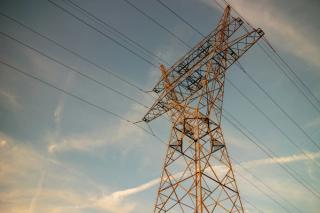
Australia’s low-carbon future: the role of the waste and water sector in climate change and emission reduction
- Post Date
- 09 May 2023
- Read Time
- 7 minutes

The COVID-19 pandemic is recognised as one of the major shocks of the 21st century. Nevertheless, there are important global ‘megatrends’ that are critical to the survival of humans and existing ecosystems. These megatrends are tied to economic recovery, representing challenges around growth and environmental sustainability. The global megatrends include climate change and resource stress, which stem from population growth, resource consumption and the need for more renewable technologies.
The Australian government has committed to reducing greenhouse gas (GHG) emissions to 26 – 28% below 2005 levels by 2030. All Australian states and territories have an aspirational goal of achieving net-zero emissions by the mid-century. At a technical level, actions to reduce emissions might seem obvious. However, to be feasible, the economic and social implications of emissions reduction goals and proposed strategies are less well understood and need to be tested. Collaboration among government, businesses and the community is critical to developing a common understanding of pathways toward significant emissions reduction and sustainable, resilient economies simultaneously.
The global climate policy instruments, particularly the Paris Agreement, provides the legal framework for countries to plan and deliver on their commitments to reduce their GHG emissions. While the traditional energy sources (coal, gas, oil, solar and wind) will continue to play an important role in Australia’s future, the transition to a low carbon economy will require a diverse mix of other transformational low emission technologies.
Investment opportunities for the water and waste sector
Adoption of low emission technologies will help Australia in meeting its international climate change obligations. A Long-term Emissions Reduction Strategy is currently under development by the Commonwealth Government, and at its core is Australia’s Technology Investment Roadmap, which highlights priority low emission technologies. Production of dispatchable low-carbon electricity through implementation of energy from waste and adoption of carbon capture and storage at conventional power plants are key investment opportunities that reduce GHG emissions from the electricity sector.
Development of small to large-scale EfW facilities
Energy from waste (EfW) is the term used to describe the treatment of waste to harness energy from material that would otherwise go to landfill. The energy is created either by treating residual waste (i.e., waste that cannot be recycled) using high temperature treatment technologies (e.g., combustion or gasification) or by treating organic waste including sewage sludge, using biological anaerobic digestion for energy. The National Waste Policy Action Plan sets a target of 80% average resource recovery rate from all waste streams by 2030 (Department of the Environment, 2019). The national resource recovery rate in 2018-19 was 63% (Blue Environment, 2020). To achieve the 2030 national resource recovery target, a fully integrated waste and resource recovery system, which includes energy from waste, will be critical. Hence EfW facilities that turn urban waste into energy are a major investment opportunity in Australia. There are two main options when it comes to EfW facilities:
- Anaerobic digestion facilities – these facilities will likely be a viable waste management option for local urban and regional councils collecting source separated organic waste particularly from the domestic, commercial and industrial sectors
- Thermal EfW facilities – while anaerobic digestion technology can be adopted for the management and treatment of the organic fraction of domestic, commercial, and industrial waste streams, there would still be a residual waste fraction destined for landfill disposal. Particularly for those residual wastes, thermal EfW technologies can play a part. There is no nationally consistent policy framework that outlines Best Practice principles and requirements for these facilities in Australia. This lack of a national standard approach to EfW has created significant hurdles and slowed down development of the EfW sector in Australia.
Development of water resource recovery facilities
The water industry is currently facing numerous challenges, risks and opportunities to which utilities must respond. Some of the key challenges include the pressures of ageing infrastructure and a growing population, changing planning and regulatory environments, transitioning energy markets, technology changes and climate change impacts. For many water utilities, capital works for wastewater treatment infrastructure upgrades that could have a significant impact on the treatment plant’s overall energy balance would typically include modifications to the incoming solids capture process, primary followed by secondary treatment, nutrient removal, and sludge stabilisation processes.
Water utilities can adopt a ‘systems thinking’ approach to develop long-term adaptive strategies that turn their wastewater treatment plants into water resource recovery facilities. At these sites, energy self-sufficiency goals and new revenue streams could be pursued through implementation of onsite bioenergy generation and co-digestion of food waste and sewage sludge.
Exploring high-value low-carbon markets
Commercialisation of hydrogen, biogas, biomethane and carbon capture and storage in the gas sector can result in significant decarbonisation benefits and new opportunities for the transport sector.
- Hydrogen production - While hydrogen offers benefits and opportunities, producing hydrogen particularly from electrolysis also requires water. This could present constraints in drought-impacted parts of Australia. Ideal production sites would need to have access to renewable energy and sustainable water supplies. Opportunities exist in the water sector to develop recycled water schemes that would supply water at these hydrogen production sites. However, high purity water is required for electrolysis and this poses additional challenges around treatment, energy requirements, and disposal of waste streams.
- Biogas upgrading to biomethane - Over the medium term, large-scale grid-sourced wind and solar might become a lower cost option than onsite co-generation for many biogas plant operators. By contrast, market dynamics including energy and climate change drivers will likely increase the cost of transport fuels and natural gas over this timeframe. As a result, high-value markets for biogas would need to be explored and investigated. Biomethane could provide significant investment opportunities. This renewable gas has been identified as a key decarbonisation pathway in Gas Vision 2050 (Energy Networks Australia, 2020). Replacement of natural gas with biomethane in liquified natural gas (LNG) and compressed natural gas (CNG) applications offers GHG reduction opportunities.
- Carbon Capture and Storage - Given the central role that oil and gas, cement, iron and steel industries play in the economies of many countries (including Australia), achieving significant emissions reduction in these ‘hard-to-abate’ industries will be challenging. Carbon Capture and Storage (CCS) could provide cost-effective solutions in the medium-long term, especially if the goal of achieving net-zero emissions by 2050 is to be pursued and realised.
Overall, the pathways towards decarbonisation, while technically feasible, need to balance the energy ‘trilemma’: energy security, energy affordability and environmental outcomes.

